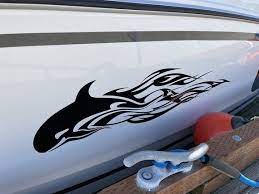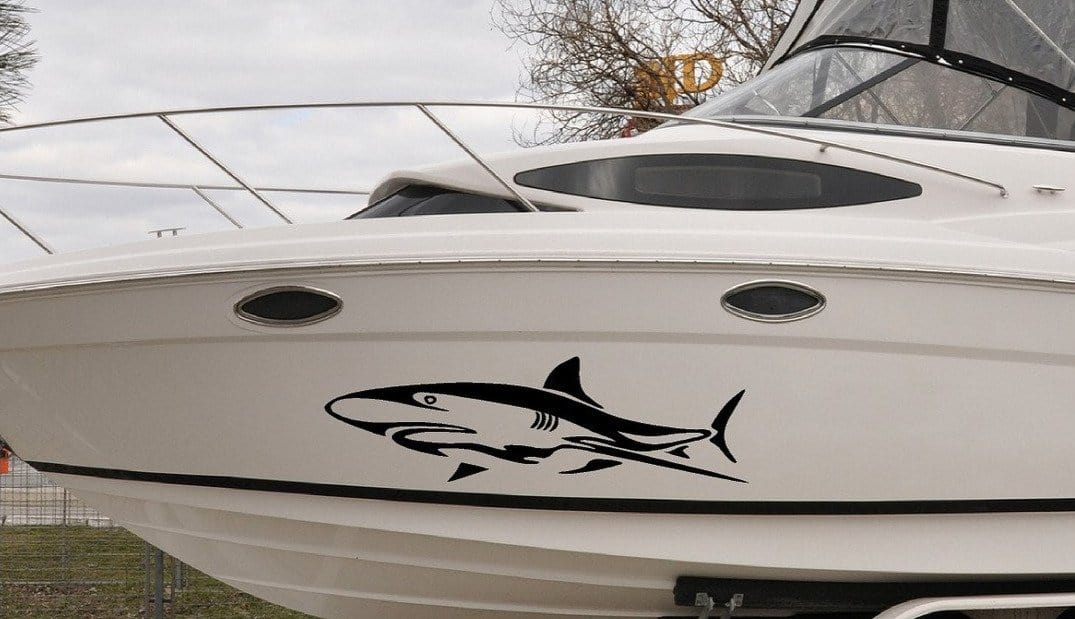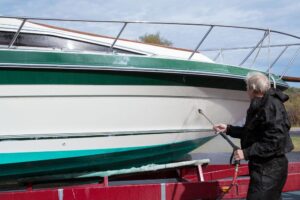The decal wasn’t etched into the hull, but because it adheres to the boat so strongly, it can be difficult to remove without a lot of time and effort. But if you remove them carefully and use the right products and tools, you can avoid scratching the hull. Learn everything you need to know about removing unwanted vinyl decals from boats in the following paragraphs.
Work Carefully
You can see how quickly a sticker can peel off a new credit card if you’ve ever taken one off. The same idea for an old boat decal is shared by many boat owners. They reason that if they follow the proper steps, it ought to easily come off.
When that occurs, things go wrong. You usually have to force the issue if the decal doesn’t remove that easily. If you can’t get a hold of the decal at all, that means ripping, tearing, or enduring unending frustration.
The answer is easy: patience. You must have faith that the procedure will succeed if you employ the appropriate tactics and products (more on that in a moment). It’s not like removing a sticker that was intended to be removed.
Boat decals will stick for a very long time. It will be easier to remove the decal properly if you take your time. You should get it off without incident.
Three Ways To Remove Boat Decals
With An Eraser Wheel
When using the eraser wheel to remove decals, a drill should be attached. This is used to remove pinstripes and bumper stickers, so you might find it in auto body shops.
Therefore, it’s the best option if you want to make stripes or decals for out-of-state registration disappear. Some boaters view this as a simple option with benefits.
Its absence of harsh chemicals, high pressure, and extreme heat will appeal to you. You don’t need to exercise extra caution because of dangerous substances, unlike when you use other methods. Additionally, it indicates that you are not even close to boat damage.
Be aware that the decals you are attempting to remove will have eraser wheel residue on them. When you use a pencil eraser to remove something from paper, the situation is comparable. Fortunately, the particles are easily removable, so don’t worry.
Use A Heat Gun Or Hairdryer
In the boating industry, we also use a heat gun or hairdryer to loosen decals and stickers before removing them. A scraper or razor blade will then be used to carefully peel the decals off the surface.
To use a heat gun for this, however, requires extreme caution, as we briefly mentioned earlier. The damage caused to your boat outweighs its excellent effectiveness in removing stickers. Use a hairdryer instead unless you are absolutely certain that you can avoid doing this.
You must first warm the surface of the decal you want to remove before using this method. In order to make the decal more flexible, keep warming the surface area. If using a heat gun, be sure and use a very low setting to avoid damage. Scraping Off the Decals
Afterward, scrape the vinyl off the boat’s surface using your scraper or razor blade. When using a razor blade, use extreme caution because you could accidentally cause unsightly gashes in your boat. This makes a plastic blade tool a much better choice overall.

To get rid of any glue that was left behind after removing the vinyl labels, you’ll need an adhesive remover. Typically, a good option is the 3M all-purpose adhesive cleaner.
Before using it all over the surface, always make sure to spot test your adhesive remover in a discrete area. Once more, we’ll go into more detail about removing glue and sticker residue later.
Pressure Washer With Hot Water
The hot water from a pressure washer can make some stickers and decals pliable. Additionally, the washer’s force can assist in removing any residue. When applying pressure, however, don’t go in too hard at first.
It’s preferable to start with modest, discrete sections. You must pay close attention to see if the washer ever damages your boat as you work. Starting with a low setting and moving up to medium is exactly what you should do.
Allow water to reach the decal and the area around it. You’ll realize when you’ve successfully moved it the next thing!
A power washer is efficient and secure according to the above explanation. It is regrettably not a popular option. The main reason is that you can’t just find it lying around. Somebody would have to look for a business that sells or rents it.
Clean The Area Once Finished
There is one more step that a lot of boat owners skip: what to do with the area once you’ve removed a boat decal. Despite the appearance, it is not clean. In actuality, there might be some adhesive leftover. This adhesive may then draw debris.
Even if you intend to use another decal, spray the adhesive area once more, clean it up, and wait until it is completely dry before using a fresh decal. It should work if you use a boat cleaner.
This will ensure that you work with fresh adhesive on a dry surface, which makes for the best chance that your new decal will be there to stay.
Precautions And Considerations
Although using a hot water pressure washer is efficient and generally secure, it might not be the best choice for everyone. This is largely due to the fact that most people won’t have one lying around. A local hardware store may have a rental model that you can use.
The tools required for the other methods on this list, on the other hand, are fairly standard. A hairdryer is a common household item, and you probably have a few razor blades. Furthermore, you can find scraper tools and eraser wheels at any hardware store for very affordable prices.
Whichever method you select, it ought to be effective for removing decals from your boat. It doesn’t matter if your boat is made of aluminum, fiberglass, or even wood to apply this rule.
In spite of this, you should exercise extra caution when using heat and pressure on a boat made of wood. Use the first technique with the eraser wheel instead of them altogether if you can.
Read More:



